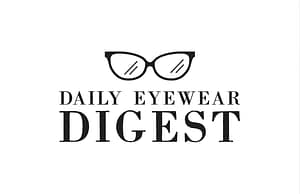Dry eye syndrome occurs when your eyes don’t produce enough tears or the quality of your tears isn’t adequate. This causes discomfort, blurry vision, and even long-term eye damage if left untreated.
Two Types of Dry Eye:
- Aqueous-deficient: Not enough tear production.
- Evaporative: Tears evaporate too quickly.
Common causes include aging, screen overuse, certain medications, environmental exposure, and autoimmune conditions like Sjögren’s syndrome.
Why Monitoring Dry Eye Progression Matters
Dry eye might start as a minor nuisance, but it can worsen over time and lead to complications like:
- Corneal damage or ulcers
- Increased risk of infection
- Vision impairment
Early detection allows for better management, preventing permanent damage and improving comfort.
Early Signs of Worsening Dry Eyes
If you’ve already been diagnosed with dry eye, keep an eye on these signs—it may mean your condition is getting worse:
- Increased eye redness after work or screen use
- Burning or stinging sensations that last longer or happen more often
- Frequent temporary blurred vision, especially after blinking or reading
These symptoms suggest your tears aren’t doing their job anymore—either in quantity or quality.
Advanced Symptoms to Watch For
Dry eye can escalate from mild irritation to debilitating discomfort. Here’s what to look for:
- Mucus or stringy discharge from the eyes
- Severe light sensitivity (photophobia)
- Difficulty keeping eyes open, especially in dry or windy environments
- Eye fatigue and headaches related to eye strain
These are signs that the ocular surface may be breaking down and needs urgent care.
When Occasional Discomfort Becomes Chronic Dry Eye
Mild dry eye tends to come and go, triggered by activities like computer work or air travel. But when it becomes chronic, symptoms are:
- Daily or near-daily
- Resistant to basic eye drops
- Interfering with quality of life
If symptoms persist for more than a few weeks despite care, it’s time to escalate your treatment plan.
Measuring the Severity of Your Dry Eye Symptoms
You don’t have to guess—tools exist to help you track your condition.
In-Clinic Tests:
- Schirmer’s test: Measures tear volume.
- Tear Breakup Time (TBUT): Assesses tear film stability.
- Ocular surface staining: Detects damage to cornea and conjunctiva.
At-Home Tracking:
- Keep a daily log of symptoms, noting intensity and triggers.
- Use mobile apps like MyDryEye or EyecareLive to track trends over time.
Environmental and Lifestyle Factors That Worsen Dry Eyes
You may be unknowingly making things worse. Common triggers include:
| Trigger | Effect on Eyes |
|---|---|
| Low humidity or wind | Increases tear evaporation |
| Screens and blinking | Reduces blink rate |
| Heaters and air conditioning | Dry out the air |
| Contact lens overuse | Inhibits tear production |
| CPAP use (for sleep apnea) | Air leakage irritates eyes |
Awareness of these factors can help you adjust your environment and habits.
Red Flags That Need Immediate Attention
While most dry eye cases are manageable, these symptoms warrant urgent evaluation:
- Persistent pain or foreign body sensation
- Sudden blurry vision that doesn’t clear with blinking
- Swelling, redness, or discharge suggestive of infection
- No relief from drops or prescribed treatments
Don’t wait—seek professional help to prevent complications.
How to Talk to Your Eye Doctor About Worsening Symptoms
Be ready with details that help your doctor assess your condition:
- Describe how long symptoms last and when they occur.
- Note what triggers seem to worsen them.
- List treatments tried and their effectiveness.
Ask about advanced testing or alternative therapies. The more detailed you are, the better your care.
Treatment Adjustments for Progressive Dry Eye
As your condition progresses, your treatment may need a boost:
| Progression Level | Recommended Treatment |
|---|---|
| Mild | OTC artificial tears, humidifier use |
| Moderate | Prescription drops (e.g., cyclosporine), warm compresses |
| Severe | Punctal plugs, LipiFlow therapy, autologous serum tears |
Follow-up is key. Don’t self-adjust—work with your doctor for best results.
Role of Nutrition and Hydration in Managing Progression
- Omega-3 fatty acids reduce inflammation and support tear production.
- Hydration maintains tear film balance.
- Eye-friendly foods include salmon, walnuts, flaxseeds, and leafy greens.
Consider dietary supplements if your intake is low, but always consult your doctor.
Innovative Tools to Help Monitor Dry Eye Health
New technologies are making it easier to monitor and manage dry eye:
- Smart contact lenses: Monitor tear volume in real-time.
- At-home devices: Some assess tear quality and inflammation.
- Apps: Offer symptom tracking and appointment scheduling.
These tools bring eye care into your hands—literally.
FAQs on Dry Eye Progression
Q1: How do I know if my dry eye is getting worse?
A: If symptoms become more frequent, last longer, or interfere with daily life, progression is likely.
Q2: Can dry eye lead to permanent damage?
A: Yes, untreated dry eye can damage the cornea and increase infection risk.
Q3: When should I see a specialist?
A: If OTC drops aren’t working, or symptoms escalate, see an optometrist or ophthalmologist.
Q4: Are prescription treatments safe long-term?
A: Most are, especially with regular monitoring.
Q5: Can weather changes worsen dry eyes?
A: Yes—especially dry, windy, or high-altitude conditions.
Q6: Will my dry eyes go away completely?
A: Chronic dry eye can’t always be cured but can be managed effectively with the right care.
Conclusion: Taking Control Before It Gets Worse
Dry eye may start small, but it shouldn’t be ignored. By watching for red flags, adjusting your lifestyle, and communicating with your doctor, you can prevent progression and reclaim comfort.
Your eyes deserve care—don’t wait until discomfort becomes damage.

